Disclaimer: I'm no material scientist, firefighter, or insurance adjuster. I am some random Internet user.
As with computer security, safety is relative to what you are trying to protect against. Are you looking for something to help contain fires, or are you just worried that the box might make fires worse?
I've used these exact boxes. They are microwave-safe. I haven't tried putting one in the oven, but I would intuitively expect it to melt, and perhaps emit some fumes, but not catch fire. I expect that if thrown into a raging fire it would burn. They should behave how you would expect random plastic household items to behave in a fire - that's your real-world context. Certainly, this material is much less flammable than, say, cardboard.
If your device does not catch fire, then of course, it is irrelevant whether the box is flammable. So don't forget to make the device so it doesn't catch fire. Your main concern is short circuits - fix wires and devices in place so they can't move, and make sure all wiring (including circuit boards) is insulated wherever possible. Your next biggest concern is overheating. I assume your stuff is designed to work in a random room with no special cooling requirements, but you're putting it in a box so you should consider it anyway.
I don't know what stuff you have, exactly. On your list the main thing I'd worry about is buck converters, though that depends how much power they are converting. You might need to arrange them so the air can easily flow past them. Natural convection cooling is very convenient - hot air rises, so if you just poke enough holes in the top and the bottom above and below the converter, the hot air rises out the top and cool air comes in from the bottom. That's good enough for a lot of medium-power circuits. If it's not good enough, you could add a fan.
I'll point out that the same airflow path that lets hot air out and cool air in during normal operation, also lets smoke out during a fire and lets oxygen in so it can keep burning. Not much you can do about that except make it so it doesn't catch fire :)
If your device does catch fire, are you looking for a box that prevent the fire from spreading outside the box? Unless it's a special formulation, plastic is generally not the right kind of material to block the spread of fire - metal is much better. However metal boxes have their own dangers, mainly short circuits, and for this reason I would be more nervous about having any metal item near exposed battery terminals. That would be a much bigger risk than what's inside your box.
Fire protection should also be targeted where it makes sense. You will have some buck converter inside this box, but you will also have some (presumably big) batteries outside the box, right underneath. What if those catch fire - then your box material will be almost irrelevant. If you are trying to prevent the spread of fire, then perhaps instead of worrying about this box you should worry about your system as a whole. This also helps you avoid the dilemma that your cooling air holes are also fire oxygen holes.
Andy Aka's answer mentions insurance problems. I can be reasonably sure that if your house burns down and they determine the fire started from your DIY electronics equipment, and they are going to deny your insurance claim, they will deny it regardless of the box material. They'll deny it because your DIY project caught fire, not because of what type of box you chose. Perhaps if your DIY project is built to all the industry standards for household appliances then you could object, but realistically, it won't be. Plus, your house is burnt down either way. So don't let the insurance tail wag the safety dog.
